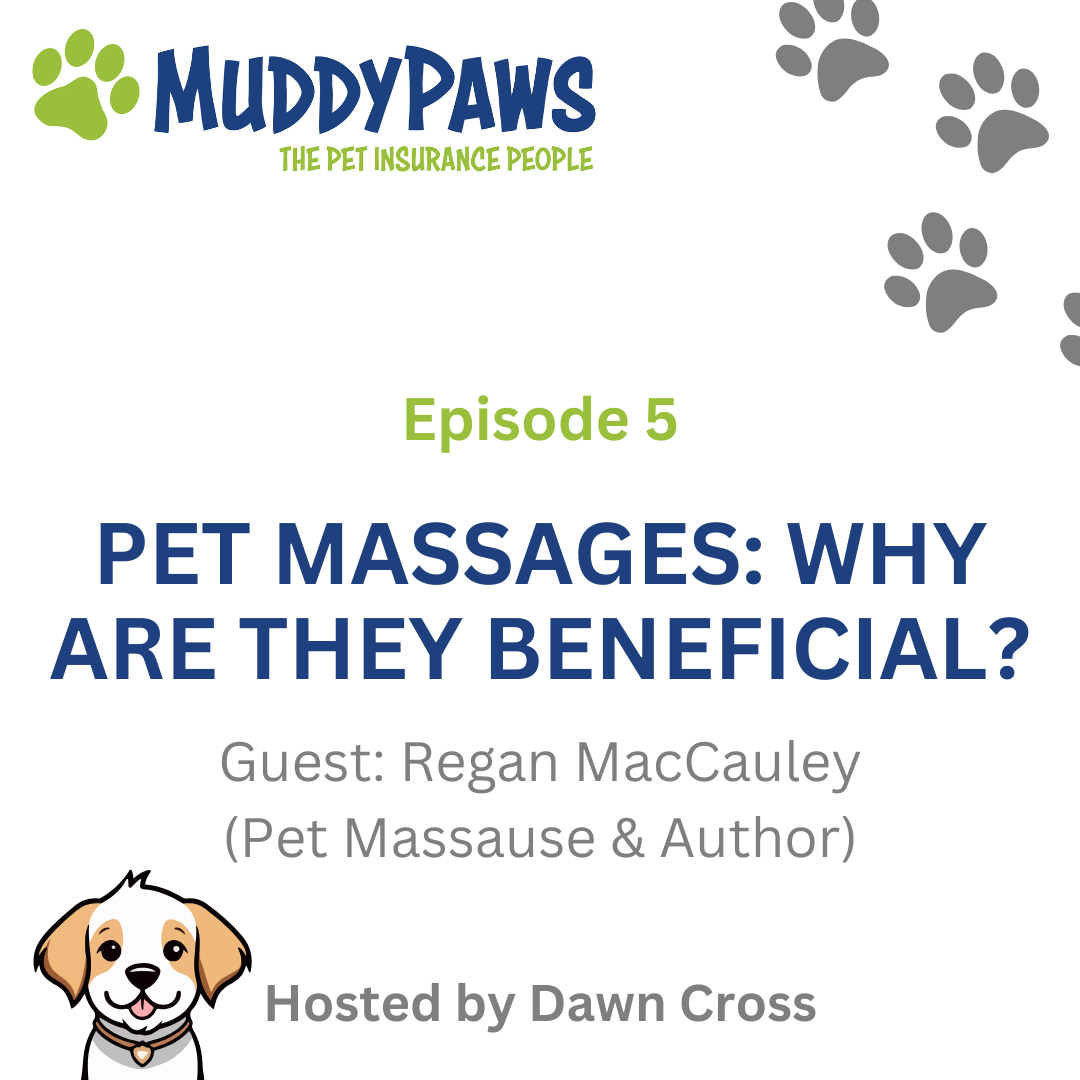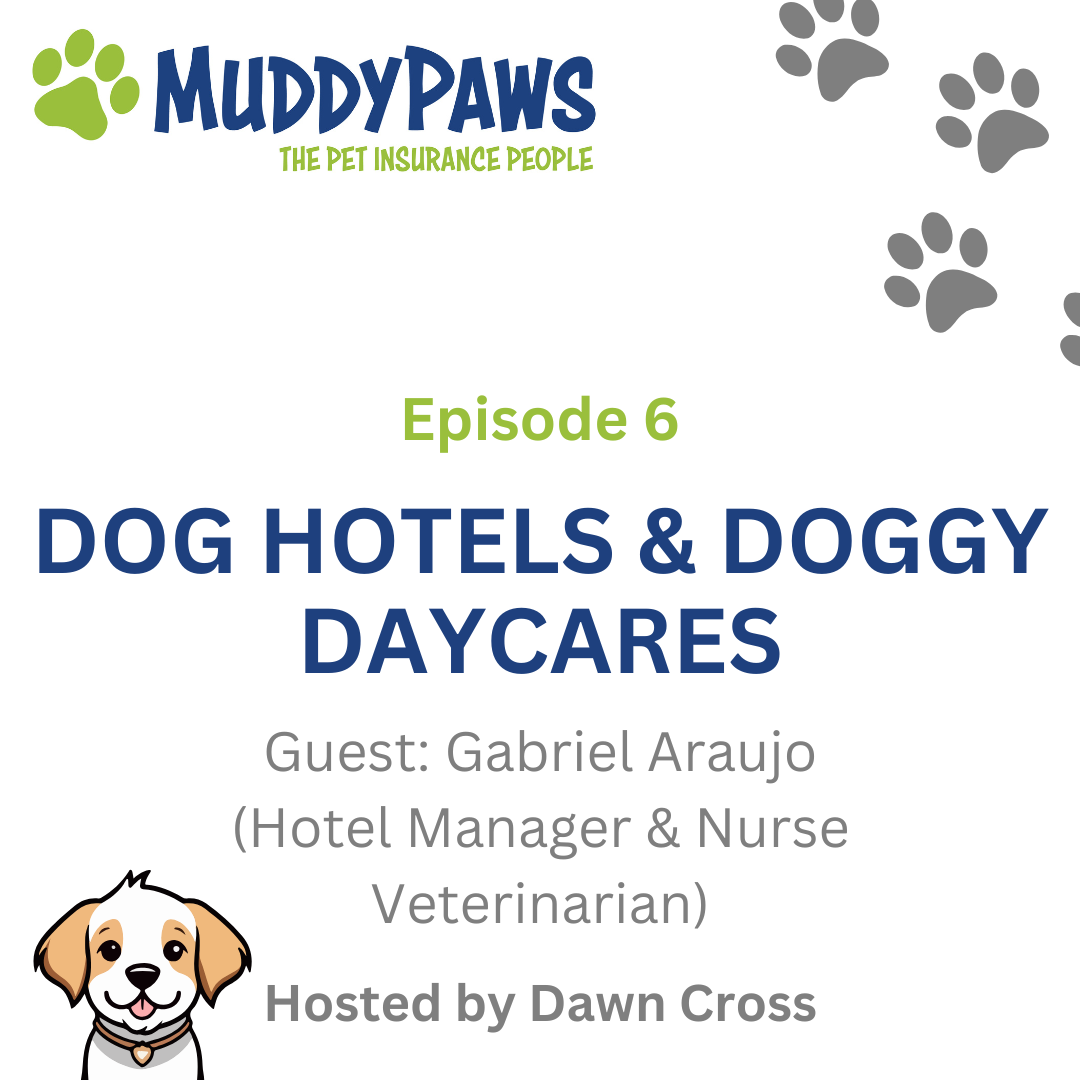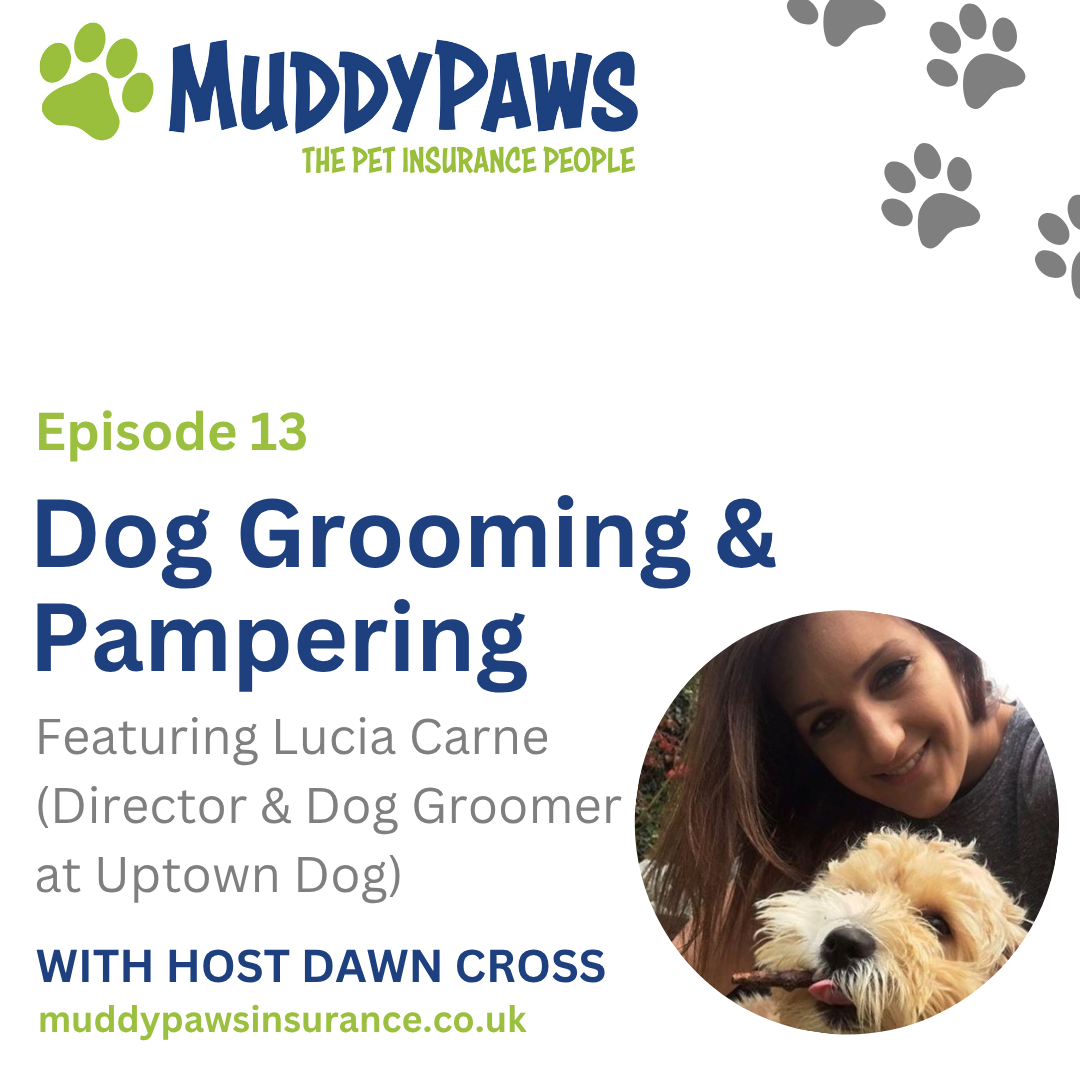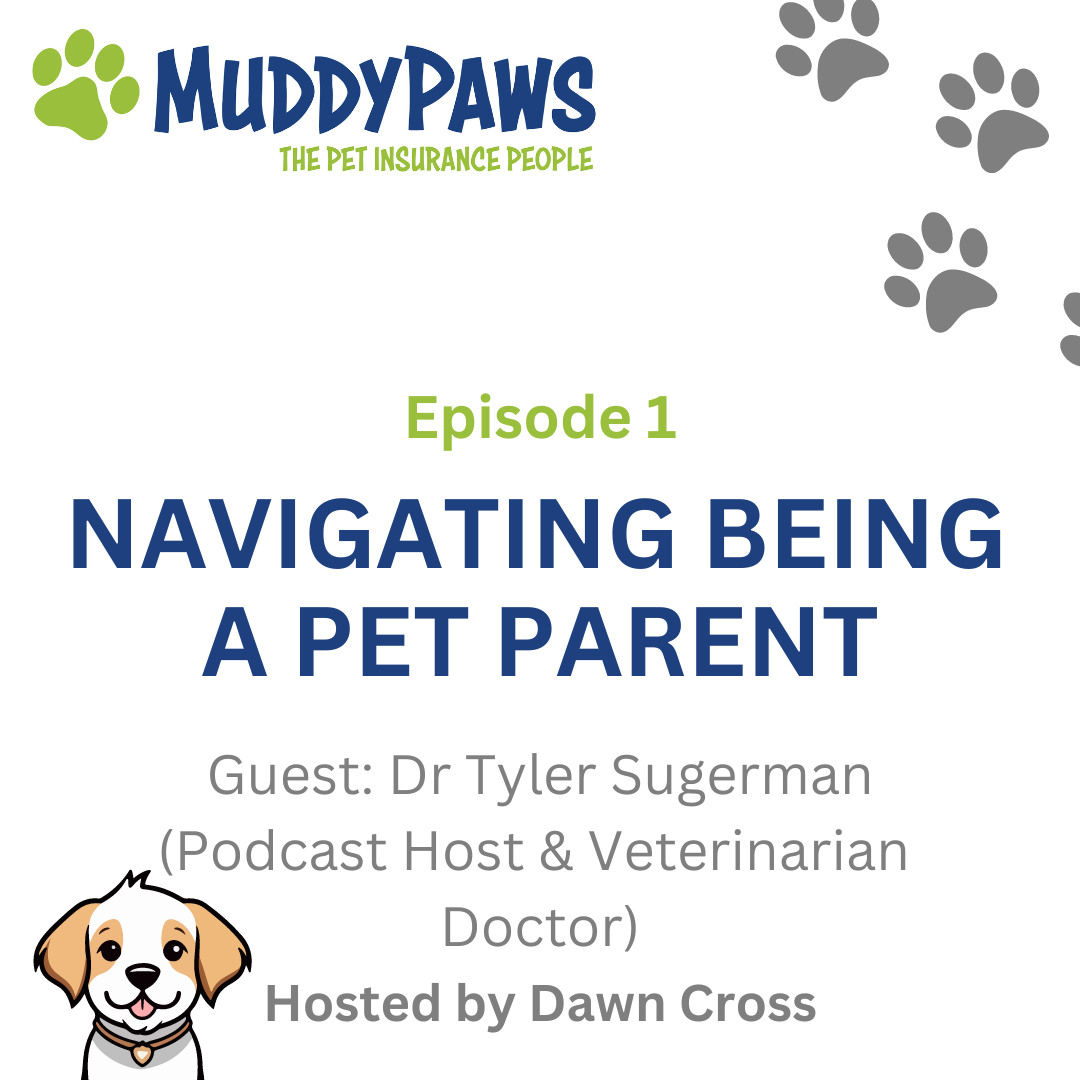Episode Transcript
[00:00:02] Speaker A: Welcome to the muddypaws Insurance Podcast. I'm your host, Dawn Cross, and today I'll be discussing PEP massage therapy with Regan McCauley, canine and feline massage therapist and author.
If you enjoy our podcast, make sure to leave a rating on your favourite podcast directory.
[00:00:21] Speaker B: So if I could get you to start off, you could introduce yourself and what you do in your business.
[00:00:26] Speaker C: Okay. I'm Regan McCauley. In 2013, I started my mobile certified canine and feline massage therapy business called Kore Canine Massage.
I did this because I wanted pets to live healthier, happier lives by relieving physical and emotional pain and tension, thereby relieving stress for the fur baby moms and dads as well, and boosting quality of life together for longer.
[00:00:57] Speaker B: That sounds amazing. How did you get into it?
[00:01:00] Speaker C: Okay, well, I've worked with dogs and cats in particular and other animals and pets in one capacity or another pretty much my entire working life.
It's not the only thing I do. I'm also an author, but ever since I was a small child, I've kind of had strong connections with animals of all sorts and to the point where friends and family and even strangers had commented that I have a way with animals. Right. So yeah, then I, I worked at a couple of vet clinics over the years and at a pet store and actually even got into animal wrangling on season three of a children's television series called Once Upon a Hamster, which actually started out as Tales from the Riverbank and Hammy Hamster way, way, way, way back in the 50s in the UK as well, and then Canada on CBC. Anyway, but getting back to the point here, I wanted to help heal animals outside of a clinical setting like a vet clinic, because it can be highly stressful there for the animals and therefore for me too. But a groomer that I was working with at the pet store at the time actually made the suggestion of a canine massage, their a therapist as a possibility for me. And from there I looked into how I could become a dog and hopefully cat massage therapist. So after a few months of research, I began my studies at Treetop's canine massage therapy program in January 2012.
And the program itself included the sort of typical animal anatomy physiology course and then hands on massages with sessions on 10 different dogs with four or more massages with each of them. And then I added four cats to complete my education.
And after finishing the 44 or so case studies, massages, and then two written exams, I was certified to practice canine and feline massage therapy October 12th. Oh no. So. Excuse me. October 1st, 2012. There we go.
[00:03:27] Speaker B: That sounds amazing. Do you always, like. Did you always grow up with pets and stuff as well?
[00:03:31] Speaker C: Do you have any of your own? Oh, yeah, lots.
I've always.
Yeah, when I was. When I was five is when I started having pet toads. I've always been an amphibian freak, so I still have a fair few amphibians to this day. But it wasn't until I was about. I guess I was 10 when I had my first cat, a Siamese cat named Mila. But ever since then, I've had a number of cats in my life. And then finally in 2010, I adopted my first dog, a Chihuahua named Raxel. And she's the little love of my life, besides my husband. Don't tell my husband.
And yeah, yeah, she. She is part of what inspired me to go into canine and feline massage therapy, too, as well as my cats and as well as a dog that I used to dog sit, who I sort of consider, like, he was sort of my first dog. Not really Raxel's my first dog, but Alfie was just dog. I looked after a fair amount while I was working at that pet store where that groomer suggested canine massage therapy. And yes, I was very attached to him as well. So, yeah, yeah, lots of animals. Growing up.
I have. I have a cat and a dog now, Raxel, as I mentioned, and Jack, my Siamese cat, and he's sitting over just. Just over there with me. And yeah, as I said, a fair few amphibians. And also in my writing for it's fiction for adults and children, but particularly with the children's writing, I always have animal characters. It's usually anthropomorphized. So animals have always been a huge part of my life and have managed to sort of infiltrate every aspect of it.
[00:05:34] Speaker B: You can definitely say you're definitely an animal lover, then.
[00:05:37] Speaker C: Yes, for sure.
[00:05:39] Speaker B: That's always good.
[00:05:41] Speaker C: Yeah. Yes. I mean, especially with the canine massage therapy bit and the feline massage therapy bit. You definitely want to love and heal animals.
[00:05:50] Speaker B: Yeah, definitely. So, obviously, you know, you've been a massage therapist quite a good while now. You've probably seen a range of pets with a range of different issues and ailments going on. So I think what would be really great for our audience is, you know, what is some of the common ailments that you tend to see within cats and dogs? Or maybe, you know, it's different for cats or for dogs.
[00:06:12] Speaker C: It generally tends to be very, very similar. Quite honestly. And their anatomies are fairly similar and even similar and comparable to our own in a sense. Obviously the obvious differences would be with their digestive systems. Off the top of my head, and there certainly are differences. But generally speaking for both cats and dogs, I've encountered physical issues such as arthritis and stiff joints. That's common to senior pets, of course. Intervertebral disc disease, hip dysplasia, more of a dog thing. But it can happen with Siamese cats and other. And a few other cats too.
Recovery from a number of issues like ACL and other surgeries.
Also, what is incredibly common and sort of hard to put your finger on is the buildup of micro injuries from a very, very early age over a long period of time. And sometimes actually it can begin with an injury and then continue with micro. Micro injuries, especially when that happens when they're on the young side.
And there's things like weight gain and. Which can be hard on the joints, of course, and growing pains in young puppies.
Haven't seen this so much in cats.
Then muscle atrophy, which can happen from a great deal of other issues that I've actually already mentioned and on and on from there. But I did also want to mention that there are psychological issues like mainly anxiety related things.
Whether it's a pet that's fresh out of the shelter system and needs to learn to trust and to gain confidence again, or the very common separation anxiety. The relaxing and bonding effects that massage therapy can have really helps in those instances as well. And not only that, actually massage therapy can reduce anxiety and in particular stress, but this helps the pet's immune system and which keeps physical illnesses from gaining a foothold. Excuse me, there's my cat's tail.
Yeah, he does.
He always wants to involve himself even if it's just his tail like that in some way.
When I.
But yes, anyway, sorry.
[00:08:40] Speaker B: That's brilliant.
It's always these kind of episodes, like no matter what, you know, if you're always going to have some sort of pet in the background and they always want to get involved. There's been several episodes now where they've been in the background or they've, you know, all of a sudden you hear this little trip in the corner.
[00:08:56] Speaker C: Yeah.
You might hear my dog bark at some point at which I apologize, but.
[00:09:04] Speaker B: We can excuse it, there is a pet podcast after all. Exactly. Yes.
[00:09:08] Speaker C: Yes, it's quite interesting.
[00:09:12] Speaker B: Sorry about that.
[00:09:13] Speaker C: I'm just gonna say Jack definitely just wants to be a part of this.
[00:09:18] Speaker B: So he can put in his own Piece of advice in a minute. So it's quite interesting you were saying about it. It's like, you know, obviously if they're feeling quite anxious, it can hold up in the body. Especially like, you know, it's very common in humans as well, isn't it? And I'm not surprised translate to other species is that, you know, especially when you feel so anxious, your muscles will come up, you know, they're very tense, very stressed because you hit that fight or flight mode, isn't it? So especially if they've dealt with a stressful situation like, you know, moving house, you know, big change, big family change even, you know, if you're bringing a baby into the home, that can be such a key factor, can't it?
[00:09:53] Speaker C: It's huge.
Animals are particularly, you know, domestic animals. Dogs and cats aren't terrific at dealing with change.
I'd say for the most part, they have a harder time with it than we do.
But what I will also say is that all the things I've listed are also the reasons that human beings will go to seek massage therapy and how massage therapy will help human beings. So when people are grappling with the idea of why does my dog or cat need a massage? Just think of the reason why you might need a massage. And basically, yeah, you'll, you'll have your answers there. There's, there's tons of benefits and. Yeah. So. And you can relate yourself by thinking how it would help you personally.
[00:10:46] Speaker B: Oh, definitely as well. And I think some people, I mean, I like to majority of people, they have that understanding of, like, you know, you want to do what's best for you. Some people are kind of like, you know, they're just pets and everything else, but like, you know, they're so similar to us in so many different ways. Like, you know, I personally would love to like, you know, look at proper nutrition, you know, look at the ways to make them happy because they are like a human but furry. Almost obviously they can't always communicate their needs either, can they?
[00:11:14] Speaker C: That's. That's right. And that's part of what makes, well, the entire field of veterinary medicine and all of the complementary fields like mine difficult is that it's, it is more difficult for them to communicate their needs. They have ways and. But you just have to be sharper about looking out for it. It's not like they can come up to you like say your kid could and say, I don't feel well. And this is why.
[00:11:43] Speaker B: Yeah, yeah, it's very difficult. So brings my next question in quite beautifully is, you know, so what are the signs that maybe an animal does need massage therapy? Obviously they can't tell us anything. I mean, some cats are very vocal, same as dogs. You know, they will just bark and yowl at you no matter what. Obviously some of them are relatively quite quiet. So what are the other signs we need to look for other than them bugging us 24 7.
[00:12:09] Speaker C: Right. Well, generally you're looking for signs of pain and yelping, crying, yowling that you mentioned can obviously be one of the things or a few of the things that they can do to communicate that to you. But other signs that you'd want to look for include limping, as might be a little, little bit obvious, but shaking also, which can indicate weakness, sometimes lethargy, depression, which is they sort of go hand in hand, hiding. Again, similar panting, excessive licking or scratching, especially in a particular area. They're be focusing on the area of pain, stiffness after rest and even potentially a loss of appetite. And for cats in particular, you can go a little further here. If they're urinating outside their litter box or not grooming themselves, especially if there's a major, you notice a major difference because some cats just groom themselves more than others sometimes if they're over grooming, flicking their tail too is another sign. So you'll want to take into account your pet's age. And most of my clients are senior pets, but some are also with me as a preventative measure as well. I wanted to mention, and this is to help mitigate some of the bumps that will come along on the way to a ripe old age. And so you want to keep an extra eye on your pet, especially if they're older, to look out for stiff joints, lameness and difficulty getting up after resting, those kinds of things. Now, with respect to anxiety, you're going to look for signs of again, shaking can be, you know, it can be either be weakness or it can be anxiety. Rapid breathing, licking their nose, panting, excessive vocalization, again, crouching down in that sort of posture, ears flat against their head.
That goes for cats and dogs, destructive behaviors in particular with dogs and whining. So those are just a few of the things to look out for with respect to anxiety as that could benefit from massage therapy as well.
Depression can also go along with anxiety too.
I did want to say, though it should be noted that there are contraindications to massage and for the most part this only means that massage therapy would need to be either postponed or modified in some way and kept brief and Light.
It's rarely the case that massage therapy has to be canceled and not done altogether. But having said that, do you mind if I list the contraindications? The general contraindications?
[00:15:05] Speaker B: No, I think that'd be really key as well as like obviously some people might think this is the best step forward, but obviously there's a range of criteria they need to think about. So yeah, definitely go to the other side.
[00:15:14] Speaker C: This is full informed consent basically.
And okay, so acute pain and or inflammation would be one because which can result from an injury causing severe pain and heat and inflammation in the site. So that needs to be examined by a vet first. And massage can only begin after the area of heat pain inflammation has been resolved. It may be able to happen in other parts of the body, but even that should wait until things are more resolved because you just don't want to boost the circulation and make the inflammation worse. Basically of general after meals massage impairs the body's ability to properly digest. So you just wait 90 minutes after your dog or cat has eaten before massage afterwards too, if they can stand it. A lot of pets, they kind of need to eat asap. But if you can wait 90 minutes after, that's great too. If your pet has cancer, I can still do light massage, especially acupressure type massage, which is just on a particular point like a knot or an area of cold.
And so as a palliative process this can be used safely, but otherwise it would increase massage, would increase the lymphatic flow and possibly increase the rate of cancer cell propagation. So that's why you don't want to do deep massage for sure and along that vein. If your pet has circulation problems, massage can be, can be, it can be done in short frequent sessions, but for things like a hematoma, it can be dangerous and it can cause small blood clots to break away and migrate around the heart's lung, brain, you don't want that, so got to be careful of that. Derma, dermal, dermatological conditions like mange and hotspots, ringworm, they can be aggravated by massage. So you have to make sure that your pet is receiving veterinary care first. And massage can only be done in the non affected sites until those are completely healed.
Diabetes, similar to cancer. Light and gentle massage can be done in short frequent sessions.
And deep massage though increases circulation which can increase that rate of insulin and glucose that are exchanged. So it could result in some major blood sugar fluctuations. So that's why you need to keep it light and gentle.
Epilepsy similarly, this is more for palliative purposes, light and gentle. Again, it can improve the dog or cat's sense of well being and ease that superficial muscle tension.
But the massage will impact the circulation and nervous systems to the extent that a seizure may be triggered. So again, that's why it has to be light. Heart conditions, again, with the circulation, increased massage, it can be increased by massage, I should say. And that makes the heart work hard, the heart work harder, but massage can be done at a palliative level as well. For this, then there's infectious or contagious disease that's just about not spreading disease around. So for obvious reasons, you don't want to take that to another client.
So that's fairly obvious.
If a dog in particular is in season, massage again could significantly increase blood flow, resulting in hemorrhaging. So you don't need more of that. And post surgery, you have to wait a couple of weeks minimum before you massage anywhere, after surgery has taken place or basically once the sutures have been removed and the vet okays it, the surgical site itself will not be massaged for at least six weeks after this and then pregnancy. So you can do the neck and arms and legs. Okay, but you have to avoid the abdomen for obvious reasons. You don't want to trigger labor prematurely. And that's it for the general contraindications.
[00:19:47] Speaker B: That's absolutely fair. And I think as well, I think as well, the, you know, it's a bit quite similar again for humans. It's like, you know, there's certain conditions, stuff like that, where, you know, it's not recommended essentially it can be quite detrimental, especially if they're unwell. First thing to do is make sure at least they've finished their course of medication or things are cleared up before you kind of go on to the next step for treatment or just to make sure that they're feeling okay, you know?
[00:20:14] Speaker C: Yes. Yeah, exactly. Yeah.
[00:20:16] Speaker B: That's absolutely amazing. So is there anything else you'd like to add before we wrap up the episode today?
[00:20:22] Speaker C: Well, I did want to let everybody know that I do have a, a doggy yoga training video. A little different than massage, but it's like a good first step you can take right now, right away to help with your pet's flexibility and their balance and stretching and actually hind end awareness. Sometimes animals are just less aware. Think of yourself wearing a backpack and when you're walking around and you're just less aware of that extra length that is behind you. Sometimes some pets have a little bit of a Lack of hind end awareness and just treat the hind end like they're dragging along for the ride a little bit. A little bit.
So doggy yoga will actually help dogs and cats. Actually it might be a little tougher with your cat, but I know some cat cats that can be trained very well.
It's basically taking a treat and leading them through through different positions on their body which causes them to stretch. And I show you that through this video. So I wanted to leave a link with you so that people can can get that doggy training, doggy yoga training video for free.
And it'll also sign you up to an email series with more educational content that goes from doggy yoga into massage therapy as well. So yeah, yeah, I think it's very worthwhile and people can check it out.
[00:22:05] Speaker B: So yeah, no, that sounds amazing. We'll leave a link in the descriptions after they finish listening or watching this video, they will be able to access it through there. So at least it's something you can give it. They can give it a shot at home, especially if they never tried it as well. You never know, they might see a big difference after watching that.
[00:22:22] Speaker C: Yes, absolutely. And I mean they should be patient too. Sometimes it takes the dog or cat a little while to learn what they're supposed to do, so you may have to go through it a few times of the treat, luring to different parts of the body, but they'll get it and it's a great. Also warm up and cool down before and after a walk for dogs.
And yeah, like humans, dogs do benefit from a warm up period and a cool down before and after any sort of rigorous exercise, especially if they're doing any sort of sporting events. But even if it's just a walk, that sounds amazing.
[00:23:04] Speaker B: Thank you so much for coming on today and sharing your knowledge and expertise.
[00:23:08] Speaker C: Thank you so much for having me having us.
[00:23:12] Speaker B: And thank you very much as well.
[00:23:16] Speaker A: Thank you to my guest today, Regan, for chatting about her expertise and advice when it comes to your pet's chiropractic needs. If you'd like to know more about her and her work, please click the link in the description.
I have been your host on cross and make sure to click follow for more episodes episodes MuddyPaws takes pride in keeping things simple. Goal is to provide a reliable insurance policy that's well delivered and gives you peace of mind. Intelligent underwriting, a user friendly application and outstanding customer service. Ensure we stand out from the crowd and provide the best for your furry friends.





